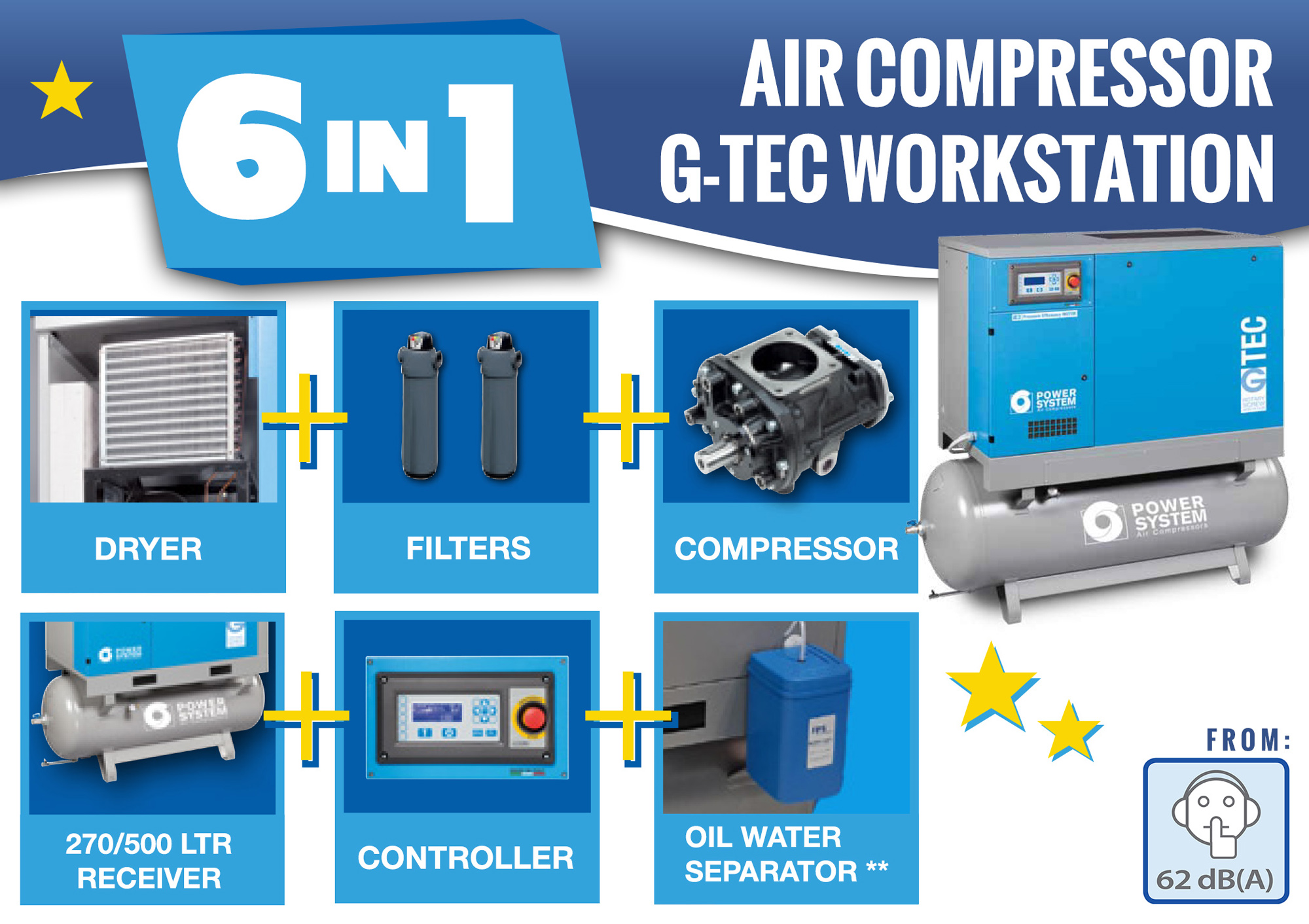
Regardless of whether the business is an automotive workshop, a small-to-medium sized manufacturing company or indeed any type of operation that simply needs dry and clean compressed air, the new G-TEC Air Compressor from FPS provides a complete compressed air workstation with ‘game-changing’ capabilities. This 6-in-1 offer comprises a high-performance compressor, refrigerated dryer, dual filtration, 270/500 litre air receiver, oil-water separator and controller, making the G-TEC Air Compressor the optimal and most convenient choice, for a whole host of applications.
Avoiding the need for many individual components that typically form part of a complex compressed air system, the G-TEC workstation features an integrated and modular design that saves space, reduces installation and improves efficiency. It delivers outstanding performance, producing a consistent supply of compressed air to power a wide range of pneumatic tools and machinery. With its high-efficiency motor and innovative design, this complete workstation also meets the growing demand for more sustainable and cost-effective compressed air solutions.
G-TEC workstations from FPS are available with a range of 7.5 to 22kW with pressure from 8 to13 bar. The high-efficiency screw compressors ensure optimal productivity and reliability. Importantly, the workstation comes with a 270 or 500 litre receiver and an integrated dryer and filters. The result? Clean, dry air for quality-assured pneumatic operations that lead to reduced downtime and maintenance costs and Indeed, reduced corrosion within pipes that also means fewer product rejects, and fewer costly air leaks, delivering yet more savings.
Another integral component of the G-TEC Air Compressor workstation is the condensate oil-water separator, supplied as standard by FPS to reduce environmental pollution. Furthermore, the intuitive built-in control panel makes using the G-TEC workstation easy to use for operators of all skill levels.
Among the business that can take advantage are automotive workshops. From tyre centres to body repair shops, the task of paint spraying and when using general garage equipment can benefit from the fixed and variable-speed models of G-TEC Air Compressor line-up. As a particular point of note, noise output is exceptionally low.
Further applications include pneumatic tools on production/assembly lines, woodworking tools such as sanders and staplers, and plasma/laser cutting. In all cases the outcome is the same: high-quality, professional compressed air delivery with economy and sustainability in mind. When operating variable-speed models, the remarkable energy-saving capabilities of the G-TEC Air Compressor workstation render it an environmentally responsible choice that also reduces operational costs by as much as 30%.
With its fully integrated components, the compact design of the G-TEC Air Compressor makes it ideal for any customer where space is at a premium. This, when combined with straightforward installation and maintenance, allows the G-TEC workstation user the benefit of a hassle-free and highly cost-effective solution for businesses of all sizes.
“Users of the G-TEC Air Compressor can achieve the perfect balance between power and efficiency, ensuring that your compressed air needs are met without excessive energy wastage,” states Moiz Palaci, Director of FPS Air Compressors. “At FPS, we are committed to providing innovative solutions that meet the evolving needs of customers. Our G-TEC Air Compressor is no exception, boasting a range of features that make it the ideal choice whenever low noise, energy efficiency, convenience and reliability are primary demands.”
Purchase, lease and rental options are available.
For detailed information on the G-TEC range of air compressors please visit:

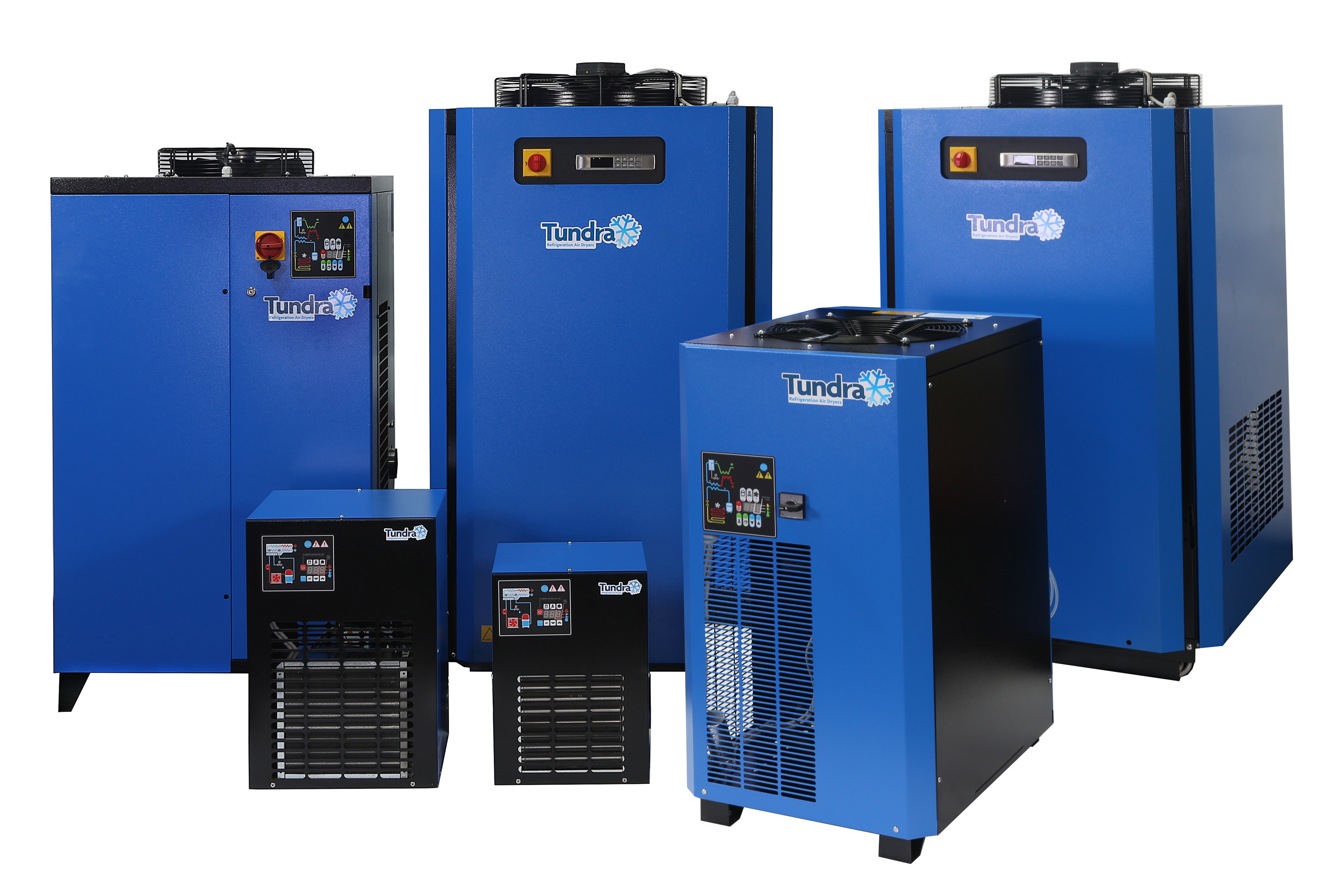
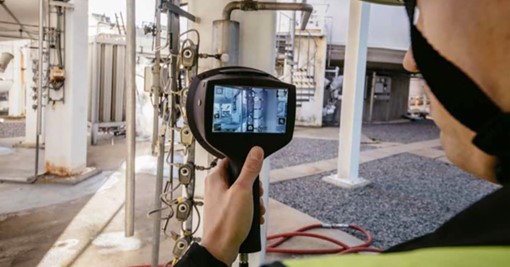

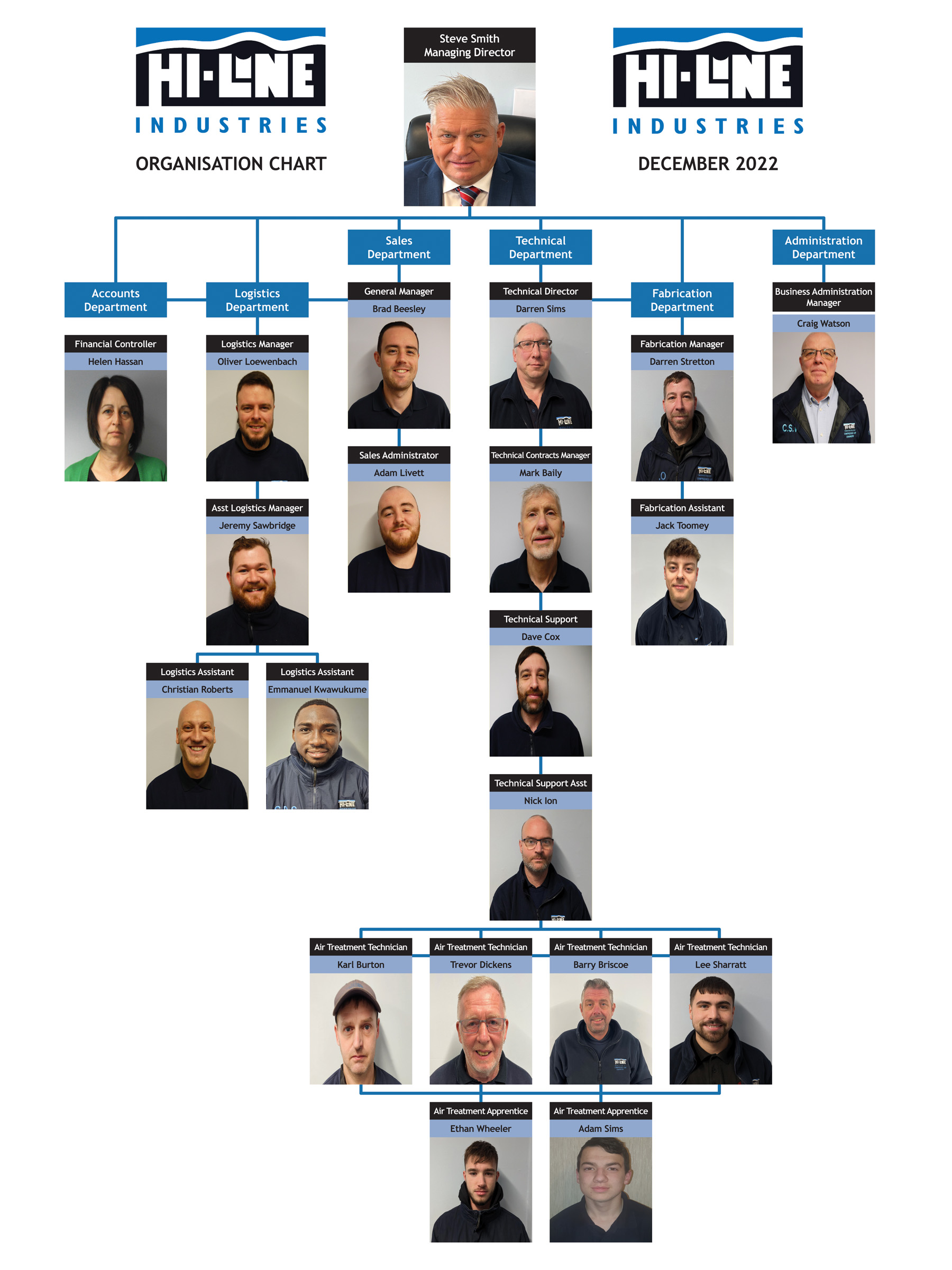
 The main reasons for this are to ensure the reliability of the instrument, that it can be trusted. To determine the accuracy of the instrument and to ensure the readings are consistent with other measurements.
The main reasons for this are to ensure the reliability of the instrument, that it can be trusted. To determine the accuracy of the instrument and to ensure the readings are consistent with other measurements.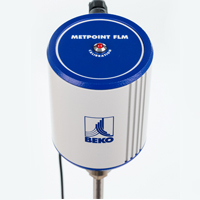 The METPOINT FLM flow meter measures the compressed air volume flow, which is the basis for accurate consumption analyses for cost reduction and effective energy management. METPOINT FLM sensors reliably detect leakage, overloads and malfunctions. Based on the analysis of the sensor data, the components of the compressed air system can be adjusted for optimum efficiency.
The METPOINT FLM flow meter measures the compressed air volume flow, which is the basis for accurate consumption analyses for cost reduction and effective energy management. METPOINT FLM sensors reliably detect leakage, overloads and malfunctions. Based on the analysis of the sensor data, the components of the compressed air system can be adjusted for optimum efficiency. 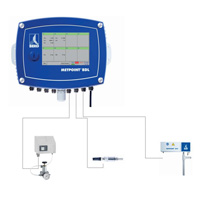 BEKO TECHNOLOGIES can now measure compressed air to ISO 8573-1 class 1 of the ISO standards. This is extremely important for industries such as food & beverage, pharmaceutical, medical, automotive and many more. BEKO TECHNOLOGIES have a portable test rig which comprises of the following four components:-
BEKO TECHNOLOGIES can now measure compressed air to ISO 8573-1 class 1 of the ISO standards. This is extremely important for industries such as food & beverage, pharmaceutical, medical, automotive and many more. BEKO TECHNOLOGIES have a portable test rig which comprises of the following four components:- For the last few years BEKO TECHNOLOGIES have been consolidating their position as the leading provider of solutions for treatment of compressed air and condensate. At the same time a number of innovative measuring devices have been brought to market such as the METPOINT OCV which is the best way for companies who require the highest levels of “oil free compressed air” to continuously measure the remaining oil vapour content.
For the last few years BEKO TECHNOLOGIES have been consolidating their position as the leading provider of solutions for treatment of compressed air and condensate. At the same time a number of innovative measuring devices have been brought to market such as the METPOINT OCV which is the best way for companies who require the highest levels of “oil free compressed air” to continuously measure the remaining oil vapour content. Martin Potter, general manager of BEKO TECHNOLOGIES has been elected by a ballot of the committee members as the new chairman for the Air Treatment and Applications Committee (formerly PCAT committee).
Martin Potter, general manager of BEKO TECHNOLOGIES has been elected by a ballot of the committee members as the new chairman for the Air Treatment and Applications Committee (formerly PCAT committee). BEKO TECHNOLOGIES will be exhibiting at the Air-Tech show 2016 at the NEC, Birmingham from 12-14th April. Please come and see us in hall 3A at stand AF244.
BEKO TECHNOLOGIES will be exhibiting at the Air-Tech show 2016 at the NEC, Birmingham from 12-14th April. Please come and see us in hall 3A at stand AF244.